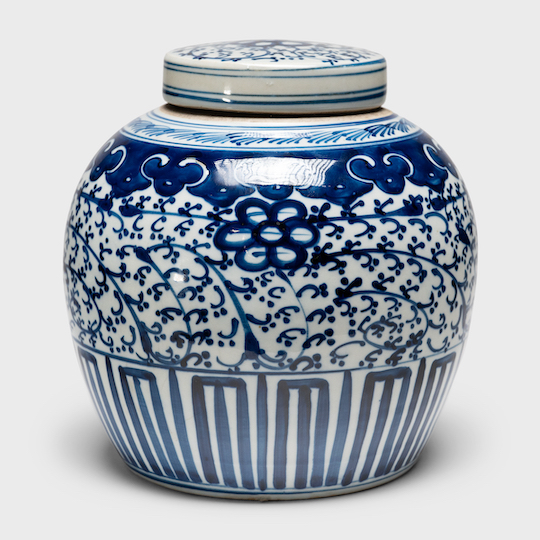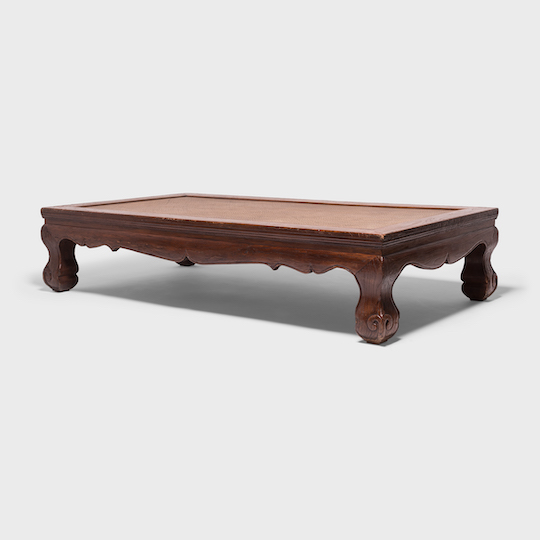
As You Wish: The Ruyi Symbol and Magical Mushrooms in Chinese & Japanese Decorative Arts
In modern pop culture, “as you wish” is the catchphrase of secretive pirates and all-powerful genies. Say it aloud at a party, and film fans will immediately think of Wesley’s devotion to Buttercup in The Princess Bride. It’s a phrase from fiction, one that builds on our fascination with objects and people that could magically fulfill our desires. In Chinese and Japanese decorative arts, however, the appeal of “as you wish” has extended beyond stories — through the enduring popularity of the ruyi symbol.

The Metropolitan Museum of Art, New York, Purchase, The B. D. G. Leviton Foundation Gift, 1984
Ruyi itself means “as you wish.” Originally, it referred to the “wish-granting wands” known as ruyi scepters which were given as birthday gifts to imperial rulers and important members of the court. These lavish wands were often topped with cloud-like forms that resembled lingzhi mushrooms — also called reishi mushrooms — which were thought to have magical properties that could ensure immortality.

Over time, the ruyi took hold as an auspicious symbol, its simplistic form often found in tandem with bat and peach symbols. The ruyi mushroom symbol abounds at PAGODA RED, and can be found in almost every type of material, including porcelain, wood, metal, and silk.
The stylized curves of the ruyi mushroom make it a beautiful repeat in pattern. Ruyi can often be found encircling the rims and bases of Chinese baluster jars, porcelain dishes and ginger jars. The blue and white tea leaf jar above is a wonderful example of ruyi crowning a piece that is laden with symbolism — almost every detail on this porcelain jar is an auspicious symbol, from the double phoenixes for love to the peonies for good fortune.



Tea leaf and ginger jars might welcome good fortune indoors, but ruyi could also be used to welcome guests and bring protection through use on exterior architecture. One example is the impressive mid-19th c. courtyard doors shown above, which feature horizontal decorative iron plates in the shape of ruyi symbols. These doors would have been the outermost entrance gates to a traditional Qing dynasty courtyard home, their protective symbolism facing outward to the world beyond.
We’re especially delighted when we spy a ruyi mushroom somewhere unexpected — and this often happens with objects featuring metalwork. This whimsical Japanese keyaki tabako-ban has both a cloud-like ruyi and sakura blossom carved into its domed brass lid. Here, the lingzhi mushroom inspiration is at its most abstract, its cloud shape a sly nod to tobacco smoke.



The ruyi on these metalwork objects can range from these individual abstract clouds to ornately detailed versions. A double gourd snuff bottle from the Qianlong period is one charming example, its sides embellished with a repoussé design of ruyi and gourds on the vine. Together with plum blossoms, these symbols are the grounding, earthly elements below a lid carved in the shape of five bats, a Shou symbol for longevity.
At first glance, this exquisite Golden Dragon silk robe seems to feature a backdrop of blue cumulus clouds, through which golden dragons fly in a celestial scene. Look closer though and these clouds are beautifully embroidered ruyi symbols. This silk garment would have belonged to a person of great status. Its gold, green and blue imagery represents the splendors of the heavenly realm — but also the auspicious power of the earthly mushrooms of longevity.
Carved wooden furniture often showcases a greater variety of mushroom forms, beyond the stylized cloud-shaped ruyi. The spectacular 19th century ruyi altar coffer above features eight carved, rounded mushrooms — one for each drawer. In China, eight is considered an auspicious number because the words for “eight” and “luck” share a pronunciation in Mandarin. This symbolism-laden table would have held pride of place in its original home. A more naturalistic mushroom form can be seen on a monumental Ruyi altar table below. Each of its carved legs features smooth reishi mushrooms that appear to grow upward from the base of each table leg.



The variation of ruyi symbols across Chinese altar tables, roundback chairs, and kang tables means there’s often something for every design preference, from clean-lined to ornate. The carved feet of a low kang table might be a discrete introduction to the ruyi, while a pair of Ming dynasty styled official’s chairs showcase it as a stand-alone centerpiece.
The popularity of Chinese and Japanese antiques endures in part because these pieces beautifully evoke our wishes and desires through symbolism. The ruyi is an encapsulation of this, a captivating reminder of both the natural world and the supernatural one, a nod to the universal appeal of having a wish fulfilled.






